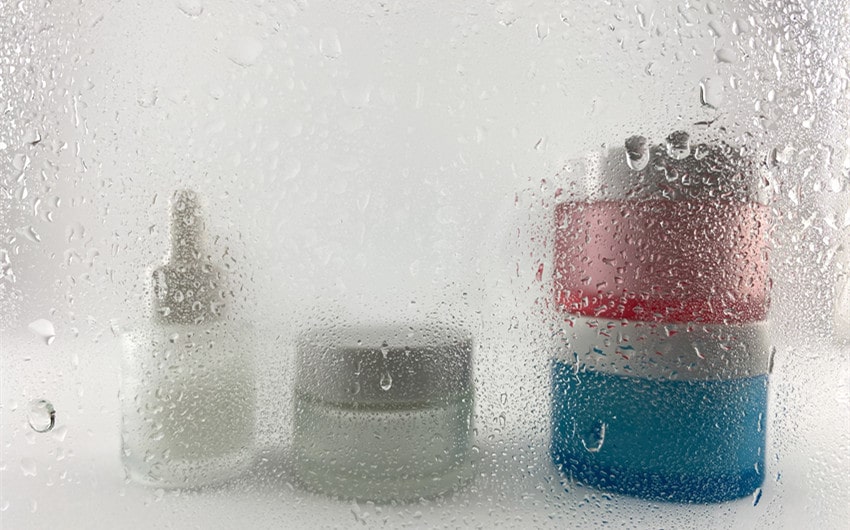Simple Ways To Manage Malassezia
Have you ever wondered why managing skin conditions feels like an endless battle with an invisible opponent? Living with Malassezia, a naturally occurring yeast on our skin, can be challenging when it disrupts our skin’s delicate balance and leads to various uncomfortable conditions.
Understanding how to coexist with these microscopic organisms isn’t about completely eliminating them, but rather about creating a harmonious environment where your skin can thrive while keeping Malassezia in check through proper skincare routines, lifestyle adjustments, and mindful habits.
Understanding Malassezia and Its Impact on Skin Health
Malassezia yeasts exist as a regular component of our skin’s microbiome, with 75% to 98% of healthy adults hosting these microscopic organisms. While they’re typically harmless, these fungi can sometimes multiply excessively, leading to various skin conditions like seborrheic dermatitis, dandruff, and folliculitis.
Living harmoniously with Malassezia requires understanding its behavior and triggers. These yeasts thrive in oily areas of the body, particularly the scalp, face, and upper torso. They feed on skin oils and can multiply rapidly in warm, humid conditions, making sweat management crucial for people prone to Malassezia-related issues.
Factors Influencing Malassezia Growth and Maintaining Balance
- Environmental conditions: Control humidity levels and keep skin dry, especially after exercise or in warm weather.
- Skincare choices: Use non-comedogenic products and avoid heavy oils that might feed the yeast.
- Diet considerations: Reduce consumption of sugary foods and refined carbohydrates.
- Stress management: Practice relaxation techniques as stress can affect skin health.
- Personal hygiene: Maintain regular cleansing routines without over-washing.
The relationship between Malassezia and skin health isn’t simply about elimination—it’s about achieving the right balance. Your skin needs these organisms for proper function, but keeping them in check prevents unwanted symptoms. Understanding this delicate equilibrium helps create effective strategies for managing skin health while coexisting with these natural inhabitants of our skin.
| To Do: Incorporate a consistent scalp and skincare routine that focuses on gentle cleansing and moisture balance to help prevent Malassezia-related flare-ups. Be mindful of product ingredients and adjust your regimen based on seasonal changes to maintain skin harmony. |
Effective Management of Seborrheic Dermatitis
Seborrheic dermatitis is a common skin condition marked by red, scaly patches and persistent itching. This condition flourishes in oil-rich areas of the body where Malassezia yeast naturally resides. More information about the percentage of the population affected by this condition can be found through the American Academy of Dermatology.
The relationship between skin health and Malassezia requires a balanced approach to treatment. While this yeast is part of our natural skin flora, its overgrowth can trigger uncomfortable symptoms. Managing seborrheic dermatitis involves using antifungal treatments and maintaining proper skin moisture levels. Many people find relief through a combination of gentle moisturizing products for Malassezia and other conditions, as well as some medicated solutions.
- Use zinc pyrithione or ketoconazole-based shampoos for scalp symptoms
- Apply gentle, non-comedogenic moisturizers to affected areas
- Maintain consistent skincare routine during flare-ups
- Monitor and reduce stress levels, as it can trigger symptoms
- Keep affected areas clean and dry to prevent yeast overgrowth
Understanding your specific triggers plays a crucial role in long-term management. Environmental factors like humidity, diet, and seasonal changes can impact symptom severity. Creating a personalized care routine that addresses these factors while supporting your skin’s natural barrier can lead to better symptom control and improved quality of life.
| Fun Fact: Malassezia yeast, which plays a key role in seborrheic dermatitis, thrives on the natural oils in your skin and even prefers areas with more sebaceous (oil-producing) glands, like the scalp, face, and upper body! |
Preventive Strategies for Atopic Dermatology
People with atopic dermatitis may experience Malassezia-related flare-ups, making proper skincare essential for managing symptoms. A consistent routine that focuses on gentle products can significantly reduce the frequency and severity of these breakouts.
The right combination of skincare products creates a strong foundation for healthy skin barrier function. Using mild, fragrance-free cleansers helps maintain your skin’s natural balance without stripping away protective oils. Following up with lightweight, non-greasy moisturizers keeps your skin hydrated while avoiding the oily environment that Malassezia thrives in.
Key Things to Include in Your Daily Skincare Routine
- Use lukewarm water for cleansing—hot water can irritate sensitive skin
- Choose hypoallergenic products without added fragrances or dyes
- Apply moisturizer while skin is slightly damp to lock in hydration
- Pat skin dry gently instead of rubbing with towels
- Avoid heavy oils and butters that can feed Malassezia growth
Remember to pay special attention to problem areas where Malassezia commonly appears, such as the face, chest, and back. Regular cleansing of these zones, especially after sweating, helps prevent fungal overgrowth. Incorporating zinc-based products can provide additional relief, as zinc has natural antifungal properties that help control Malassezia while soothing irritated skin.
| Expert Tip: To help soothe atopic dermatitis flare-ups, consider integrating a gentle barrier repair cream with ceramides into your routine. Ceramides support skin resilience by reinforcing the protective layer, reducing irritation, and minimizing external triggers. |
Holistic Lifestyle Adjustments for Better Skin Health
Making thoughtful changes to your daily habits can significantly impact your skin’s health when dealing with Malassezia. Your eating patterns directly influence the yeast’s ability to multiply on your skin’s surface.
The foods you consume play a vital role in managing Malassezia-related skin concerns. A balanced diet rich in anti-inflammatory foods can help reduce flare-ups and support your skin’s natural defense mechanisms. Including foods high in omega-3 fatty acids and antioxidants helps build skin resilience.
Key Lifestyle Modifications
Here are key lifestyle modifications that can help manage Malassezia effectively:
- Replace refined carbohydrates with whole grains and fiber-rich alternatives
- Add probiotic-rich foods like yogurt and kimchi to support gut-skin health
- Practice regular stress management through gentle exercise or meditation
- Maintain consistent sleep schedules to support skin repair
- Choose breathable fabrics for clothing to reduce excess sweating
Beyond dietary changes, incorporating daily mindfulness practices proves beneficial for skin health. Just 15 minutes of meditation or gentle stretching can lower cortisol levels, which often trigger skin reactions. Many people find that combining these lifestyle adjustments with proper skincare creates a more effective approach to managing Malassezia.
Regular physical activity, particularly low-intensity exercises like walking or swimming, helps improve circulation and supports your body’s natural healing processes. Remember to shower promptly after exercising to minimize sweat-induced flare-ups.
| Why This Matters: Adopting small but meaningful lifestyle changes can create a strong foundation for long-term skin health. Managing factors like diet, stress, and daily habits help maintain balance and minimize flare-ups caused by Malassezia. |
Final Thoughts
Living with Malassezia requires understanding that these fungi are natural inhabitants of our skin, and the goal isn’t to eliminate them but to maintain a healthy balance. Through consistent skincare routines, mindful lifestyle choices, and proper management techniques, it’s possible to minimize flare-ups while maintaining healthy skin.
Remember that everyone’s journey with Malassezia is unique, and finding your personal balance might take time, but with patience and the right approach, you can achieve comfortable coexistence with these microscopic companions.







